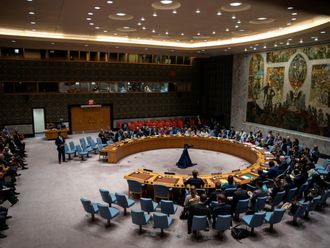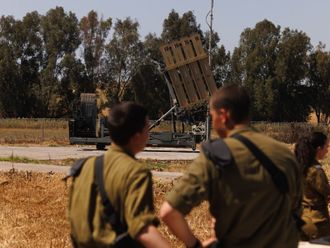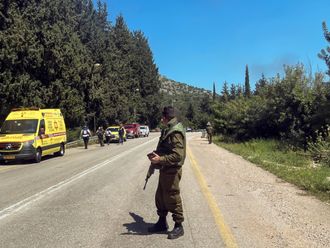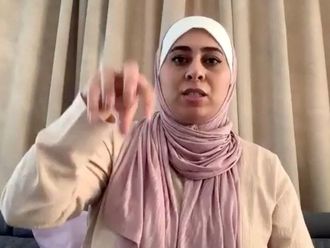Beirut: A war monitor said buses evacuated Daesh terrorists from an enclave south of Damascus on Sunday in a withdrawal deal, though state media denied the report and said the regime’s army was fighting to finish off the militants.
The recovery of the enclave south of Damascus will mark another milestone in Bashar Al Assad’s war effort, crushing the last besieged rebel enclave in western Syria.
Swathes of territory at the borders with Iraq, Turkey and Jordan, however, remain outside regime control.
Syrian regime forces and their allies have been battling to recover the enclave south of Damascus since defeating rebels in eastern Ghouta, also near the capital, in April.
The area is centred around the Al Hajar Al Aswad district and the adjoining Palestinian refugee camp of Yarmouk.
In a live broadcast, a reporter with Syrian regime TV said the regime’s army operations in the Hajar Al Aswad area were nearing their end and insurgent lines were collapsing as columns of smoke rose from the area behind him.
The Syrian Observatory for Human Rights earlier said buses had entered the enclave after midnight to take out fighters and their families. They had left towards the Syrian Badia, a sparsely populated expanse of territory east of the capital that extends to the border with Jordan and Iraq, it said.
Daesh had torched their offices in the Yarmouk enclave, the Observatory said.
Negotiated withdrawals have been a common feature of the Syrian war in recent years as the regime, aided by the Russian military and Iran-backed forces, has steadily clawed back territory.
The rebels have mostly been given safe passage to northwestern Syria. In the last two months alone, the United Nations says 110,000 people have been evacuated to northwestern Syria and rebel-held areas north of Aleppo.
The opposition has called it a policy of forced displacement amounting to demographic change to drive out Al Assad’s opponents.
The Syrian regime has said nobody is forced to leave and those who stay must accept its rule.
While Al Assad has vowed to win back “every inch” of Syria, the map of the conflict suggests a more complicated time ahead from now on.
The US military is in much of the east and northeast, which is controlled by Kurdish groups that want autonomy from Damascus. It has used force to defend the territory from pro-Al Assad forces.
Turkey has sent forces into the northwest to counter those same Kurdish groups, carving out a buffer zone where anti-Al Assad rebels have regrouped.
In the southwest, where rebels hold territory at the Israeli and Jordanian border, Al Assad faces the risk of conflict with Israel, which wants his Iranian-backed allies kept well away from the frontier and has mounted air strikes in Syria.












